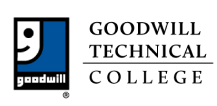
In the Medical Billing and Coding program, students will learn to translate patient data such as diagnoses, medical tests, treatments, and procedures into medical codes. These codes are then used to create and submit claims for payment. Medical practice management software and medical coding reference books are used to teach students the International Classification of Diseases (ICD), Healthcare Common Procedure Coding System (HCPCS), and Current Procedural Terminology (CPT). Additionally, students will learn medical terminology, anatomy and physiology, medical law and ethics, and basic pathophysiology and pharmacology.
What Will I do as a Medical Biller and Coder?
Medical billers and coders act as a liaison between healthcare providers and insurance companies, manage claims, resolve payment issues, and ensure compliance with HIPAA regulations. Some of your responsibilites as a medical biller and coder may include:
- Reviewing medical records - analyze patient charts and physician notes to extract relevant medical information, including diagnoses, treatments, and procedures.
- Assigning codes - translate patients' medical information into standardized medical codes.
- Ensuring accuracy - accurate coding is crucial for proper reimbursement from insurance companies and for standardized data in medical records.
- Creating and submitting claims - use the information provided by coders to generate and submit claims to insurance providers and patients for payment.
- Managing claims - follow up on unpaid claims, work to resolve claim denials or rejections, and initiate appeals when necessary.
- Handling patient inquiries - answer patient questions about their bills, explain account balances, and help set up payment plans.
- Ensure compliance - adhere to HIPAA regulations to protect patient confidentiality and stay updated on healthcare laws and billing practices.
Degree and Industry Certifications
Technical Diploma: Medical Billing and Coding, CIP: 51.0713
-
Certified Coding Associate (CCA): American Health Information Management Association (AHIMA)
-
Basic Life Support (BLS): American Heart Association
Program Length: 4 semesters, 990 hours
Program Curriculum: Medical Billing and Coding, 55 credit hours
- 17 years or older
- High school diploma or equivalent
The outlook for Medical Billing and Coding is positive, with the U.S. Bureau of Labor Statistics projecting a 7% growth for medical records and health information specialists from 2024 to 2034, which is faster than the average for all occupations. This indicates strong demand for these professionals in various healthcare settings, and career prospects can be improved by obtaining certifications, gaining experience, and specializing in fields like auditing or specific medical areas. The median annual wage for medical records specialists was $50,250 in May 2024.
Bureau of Labor Statistics, U.S. Department of Labor, Occupational Outlook Handbook, Medical Records Specialists,
at https://www.bls.gov/ooh/healthcare/medical-records-and-health-information-technicians.htm
This site provides information using PDF, visit this link to download the Adobe Acrobat Reader DC software.
